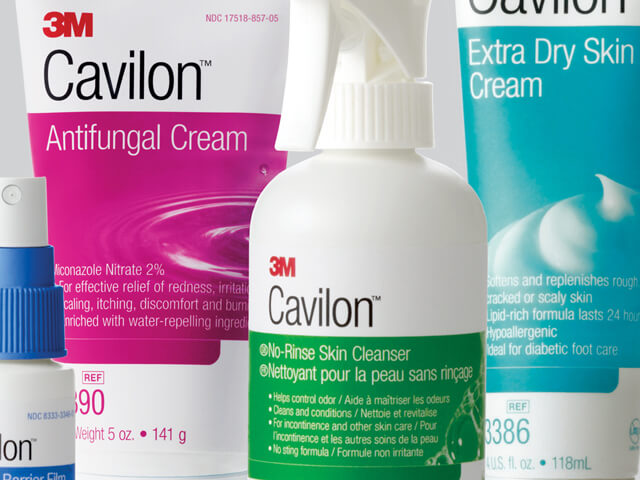8 Steps to Effective Multilingual Packaging
In this global economy, your brand is likely marketed in numerous regions throughout many cultures—where a myriad of different languages are spoken. Faced with these complexities, you may wonder how to continue to build brand loyalty and influence purchase decisions most effectively while keeping inventory and efficiencies in mind. As always, simplicity should be your guidepost.
Whether your product mix is B2C, B2B or both, your audience is certain to include a rising number of buyers who are non-English speakers. Knowing that 50-70% of consumer product choices are made at the point-of-sale,¹ bilingual or multilingual packaging that communicates clearly is imperative.
Twenty years ago, the package design of globally distributed products often contained just one or two languages per container, created specifically for each geographic region. Today, with multi-regional product distribution and tight margins, companies are reducing SKUs and packaging inventory to cut costs. Packaging that contains three or more languages is an efficient way to reach a broad audience.
To be effective, consider these strategies:
- Audit your current packaging within the competitive environment. Assess what you’re doing compared with the competition in each region where you do business. Note other companies’ use of trade dress, visual imagery, and promotional and informational messaging. Is it straightforward, clearly addressing the local audience in a way that meets their needs and understanding? Identify ways that you can differentiate your brand to stand apart.
- Assess your overall business and communications objectives. Ultimately, you’re trying to build your brand, connect with your audiences and sell product around the world. Packaging is a critical brand touch point in helping you achieve your objectives.Whether you’re designing consumer or business-to-business packaging, both will elicit an emotional response and reinforce or establish brand perceptions. And both must clearly identify and differentiate products in the line. The difference is, B2C packaging is used to make a purchase decision at the point-of-sale while B2B packaging is used to identify the correct product for the situation.Consider these questions to help you define your objectives: Are you attempting to expand an existing product line in a new region, or launching a completely new product globally? How familiar is your audience with the value and application of your product? What functions must the package serve?
- Decide whether to transliterate your brand mark. Transliteration has two components. The first is the design of characters in another system of writing to look like a logo or brand mark in that system. Transcription, the second component of transliteration, specifically maps the sounds of one language to the best matching script of another, allowing an informed reader to reconstruct the original sound of the unknown transliterated word.
Sometimes, transliteration of a brand mark can contribute to the novelty of a package. Prior to the opening of the 29 Olympiad in Beijing, Coca-Cola cans were released with the logo in different languages, from Ethiopian and Russian to Thai and Mandarin.

4. Determine the number of languages needed. There are many factors to weigh in making your decision: distribution constraints, inventory costs and above all, audience preferences in the region where you’re marketing your brand. Base your language selection on the cultural mores and communication needs at the point-of-sale or end-use. Two, three, four or even more languages could be required. We’ve seen some packages with 13+ languages on them! Regional dialects— e.g. French vs. Canadian French—compound the issue. On a positive note, some countries, particularly those in the South Pacific, accept the same packaging used in the United States.²
5. Establish message hierarchy. Do your audiences a favor and resist the temptation to put ALL information on the outside of the package. Note: Get your legal team to agree to this. Determine early in the process what the most important message is that needs to come across worldwide and be sure the design of your package reflects it. Also, establish what’s legally required in each region in terms of verbal content, symbols, icons, etc. If your product calls for complex user education or extensive translation, look for other ways to convey the information such as a foldout label, QR code or package insert.
6. Make design support messaging. The challenge is to design compelling packaging with clear product differentiation while conveying essential product information in a number of languages. The key we’ve found is simplicity and the use of imagery to help convey critical information. Scott Young, president of Perception Research Services noted in Brand Packaging, a publication focused on the role of packaging in the consumer marketplace: “The effective use of visual icons can also promote simplicity, by reducing copy, particularly on multilingual packages.” Internationally recognized symbols make this possible.

An example of compelling design from IKEA leverages the translated text itself as a design element on the front of the package. But you’ll notice there isn’t much else on the package — color, typography and a subtle graphic pattern define the trade dress.³

7. Consider alternative ways to add real estate. A significant consideration in designing any package is the surface area needed to accommodate multiple languages. English translated into Italian and German tends to require 25-35% more physical space, while Japanese and Korean may run shorter. And of course, you need to consider how much content needs to be translated, as mentioned in Step 5.
Usually the principal display panel of the package is designed to be as clean and simple as possible. Creative alternatives exist for expanding real estate:
- Apply a self-adhesive label and/or packaging insert to translate more than English-plus-two languages.

Place a QR code on the package face if your audience is mobile savvy. As is commonly done in Japan, a related multilingual mobile site with relevant information can be created, providing a wealth of information that adds value for the consumer.

8. Be culturally astute. We all know it’s critical to be sensitive to different cultures. But we cannot emphasize it enough. No one wants to be the next textbook case study of what not to do. Do your research. Use native language speakers to translate and proof text. Know what colors are best for each region and stay away from those that have negative connotations. Differences in idiomatic expressions, slang and pop culture can be significant. Photos and illustration could be misinterpreted if not used carefully, causing cultural misunderstanding.
There’s no right or wrong way to design multilingual packaging, but it’s important to keep the end goal in mind—effective communication with your target audience that helps you sell more product and aids in product selection/use. So the best advice is to keep it simple. Look for creative ways to share more information that doesn’t clutter the package. Be culturally astute at all times and remember that your job is to connect emotionally with your audience.
References
1 Consumer Buying Habits Study, Point of Purchase Advertising International (POPAI)
2 Transformers Wiki
3 The Dieline


